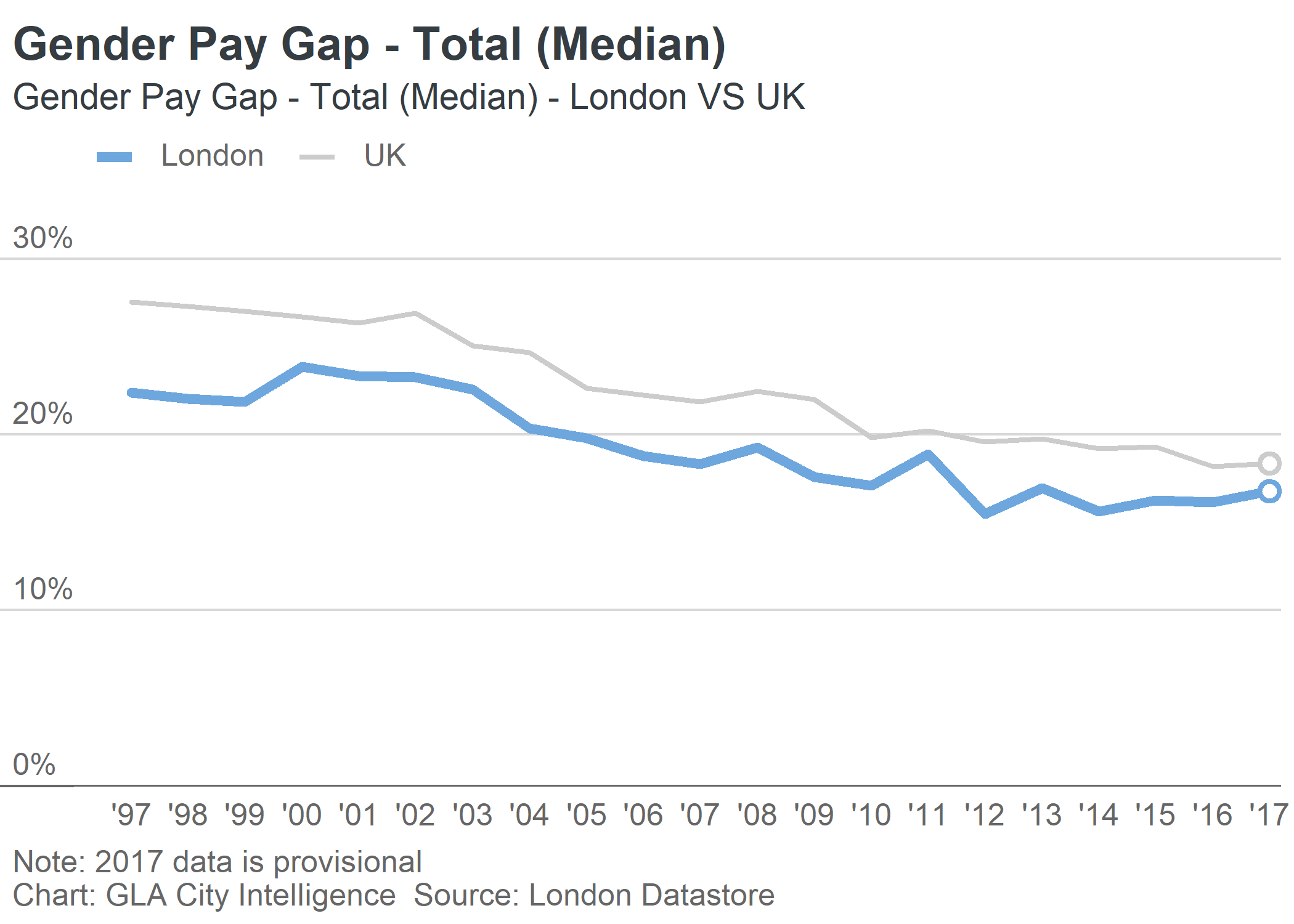The package provides several wrappers and tools to use with ggplot2 and plotly to make graphics that follow the GLA City Intelligence Data Design Guidelines.
# To install from github use the devtools function:
# This will install all required dependencies
devtools::install_github("Greater-London-Authority/gglaplot")library(ggplot2)
library(gglaplot)
library(dplyr)
library(scales)
library(lubridate)
pal <- gla_pal(gla_theme = "default", palette_type = "highlight", n = c(1, 1))
theme_set(theme_gla(gla_theme = "default"))
plot <- ggplot(data = LDNUK, mapping = aes(x = Year, y = GPG, group = location,
colour = location)) +
ggla_line(aes(size = location)) +
scale_size_manual(values = c(4 * mm_to_pt, 2 * mm_to_pt)) +
scale_colour_manual(values = pal) +
ggla_highlight(filter_type = "end") +
ggla_axisat0() +
scale_y_continuous(expand = c(0, 0), limits = c(0, 32.5),
labels = dollar_format(prefix = "", suffix = "%")) +
scale_x_date(date_breaks = "1 year", date_labels = "'%y",
expand = expansion(mult = c(0.05, 0.01))) +
labs(title = "Gender Pay Gap - Total (Median)",
subtitle = "Gender Pay Gap - Total (Median) - London VS UK",
caption = "Note: 2017 data is provisional\nChart: GLA City Intelligence Source: London Datastore")
plotPlots can be incorporated in Rmarkdown/Notebooks or exported to be included in documents/slideshows etc
ggsave(plot = plot, path = "example_plot.svg").svg is the best format to export plots, and the size and dpi of the
output can be adjusted within ggsave().
There are many online resources for ggplot2, including:
For help with gglaplot itself, see the vignettes which are available on the gglaplot github pages.
The BBC has a similar package for their house style which has some comprehensive help pages here.

